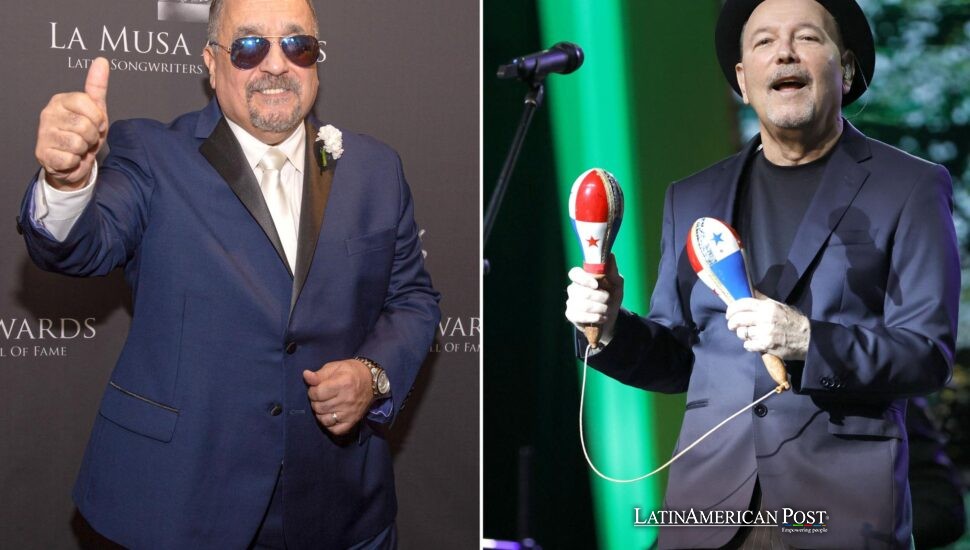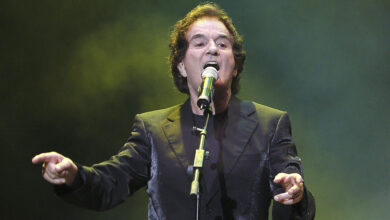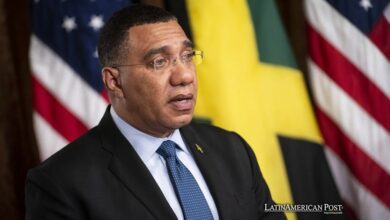Puerto Rico Dreams of Salsa Peace Between Blades and Colón

In Puerto Rico’s salsa circles, the whispers have grown into open pleas: what if Rubén Blades and Willie Colón could bury two decades of bitterness and meet again in the studio? The hope is not just for nostalgia—it is for history to repeat itself, if only for one last song.
A Duo That Defined an Era
When Luis “Perico” Ortiz, Gilberto Santa Rosa, and Humberto Ramírez talk about Blades and Colón, their words carry the weight of reverence—like astronomers describing a pair of stars that once blazed together but have since drifted apart. For them, the Panamanian poet of the barrio and the Bronx-born trombone powerhouse weren’t just collaborators—they were the architects of a new era in salsa.
Blades, now 77, and Colón, 75, first joined forces in the mid-1970s, just as salsa was pushing its way from the dance halls of New York into a global stage. Their first album together, Metiendo Mano (1976), didn’t just get people dancing—it carried stories. Songs like Pablo Pueblo, Plantación Adentro, and La Mora infused the music with social narrative, shining light on injustice, poverty, and resilience.
Then came Siembra (1978), the juggernaut. With Ortiz’s arrangements shaping tracks like Pedro Navaja and Plástico, the record didn’t just sell—it exploded, becoming one of the best-selling salsa albums of all time. “I would love for them to reunite,” Ortiz told EFE, his voice caught between admiration and longing. “What they did together wasn’t just music—it was cultural history.”
The Reunion “The World Awaits”
To Gilberto Santa Rosa, “El Caballero de la Salsa,” the idea of a Blades–Colón reunion would be more than a concert—it would be a cultural event. He compared it to the celebrated return of Richie Ray and Bobby Cruz, but even bigger. “After that reunion, this is the one all salseros—and the world—are waiting for,” he told EFE.
Santa Rosa knows the road is blocked by years of strained relations. Still, he insists the music demands it: “The music deserves it, and their musical history deserves it.” Humberto Ramírez, who worked with the duo on their last joint album, Tras la Tormenta (1995), called them “vanguard musicians” who pushed salsa past its limits, making it more complex, more global, more alive.
But Ramírez is pragmatic. “They are the ones who must decide if a reconciliation is worth it,” he said. Fans can wish, musicians can dream, but the final decision lies with two men whose history is tangled in brilliance and bitterness.
A Rift Born in Puerto Rico
The fault line runs back to 2003. The two reunited for a massive concert at San Juan’s Hiram Bithorn Stadium, celebrating the 25th anniversary of Siembra. It was meant to be a triumph, produced by Puerto Ricans Ariel Rivas and César Sainz. Instead, it became the spark for a feud that would smolder for a decade.
Blades has said he agreed to a $350,000 fee for the event. From that, he paid for flights, hotels, and the musicians—then split the rest evenly with Colón. But Colón believed he was shorted $115,000 and took the matter to court in 2007.
In 2013, U.S. federal judge Bruce J. McGiverin ruled in Blades’ favor, finding that the promoter had received the payment but diverted it to settle unrelated debts without the artists’ consent. Legally, the case was closed. Personally, it wasn’t. Whatever trust they had was gone, replaced by public jabs and long silences.
Two Legends, Separate Stages
Since then, both have performed in Puerto Rico—but never together. Colón returns this Saturday with Idilio Sinfónico, performing alongside the Puerto Rico Symphony Orchestra. The music will soar, but one half of salsa’s most storied partnership will be missing.
“They are two legends,” Ramírez said, his tone a mix of respect and resignation. “It would be good if they could reconcile somehow, but we don’t know. I don’t see it happening anytime soon.”
Still, in the bars, living rooms, and rehearsal studios of Puerto Rico, the fantasy endures: a stage set with two microphones, the brass bite of Colón’s trombone locking into the streetwise poetry of Blades’ lyrics. Theirs is a chemistry that shaped salsa’s golden era—music that was as much about telling the truth as it was about keeping the dance floor moving.
Also Read: Latin Love in Netflix’s My Oxford Year: How a Bilingual Heroine Rewrites Romance and Representation
For now, it remains an unwritten song. But in Puerto Rico, where music has a way of surviving politics, ego, and time, hope is a stubborn thing. And hope keeps playing the same chorus: one last time, juntos.
Quotes and interviews courtesy of EFE.


